This post may contain affiliate links. For more information, please see our affiliate policy.
This technique for how to poach eggs always results in firm bright whites and soft, velvety yolks that taste incredible on their own, over toast, in a salad, as part of eggs Benedict, and more.
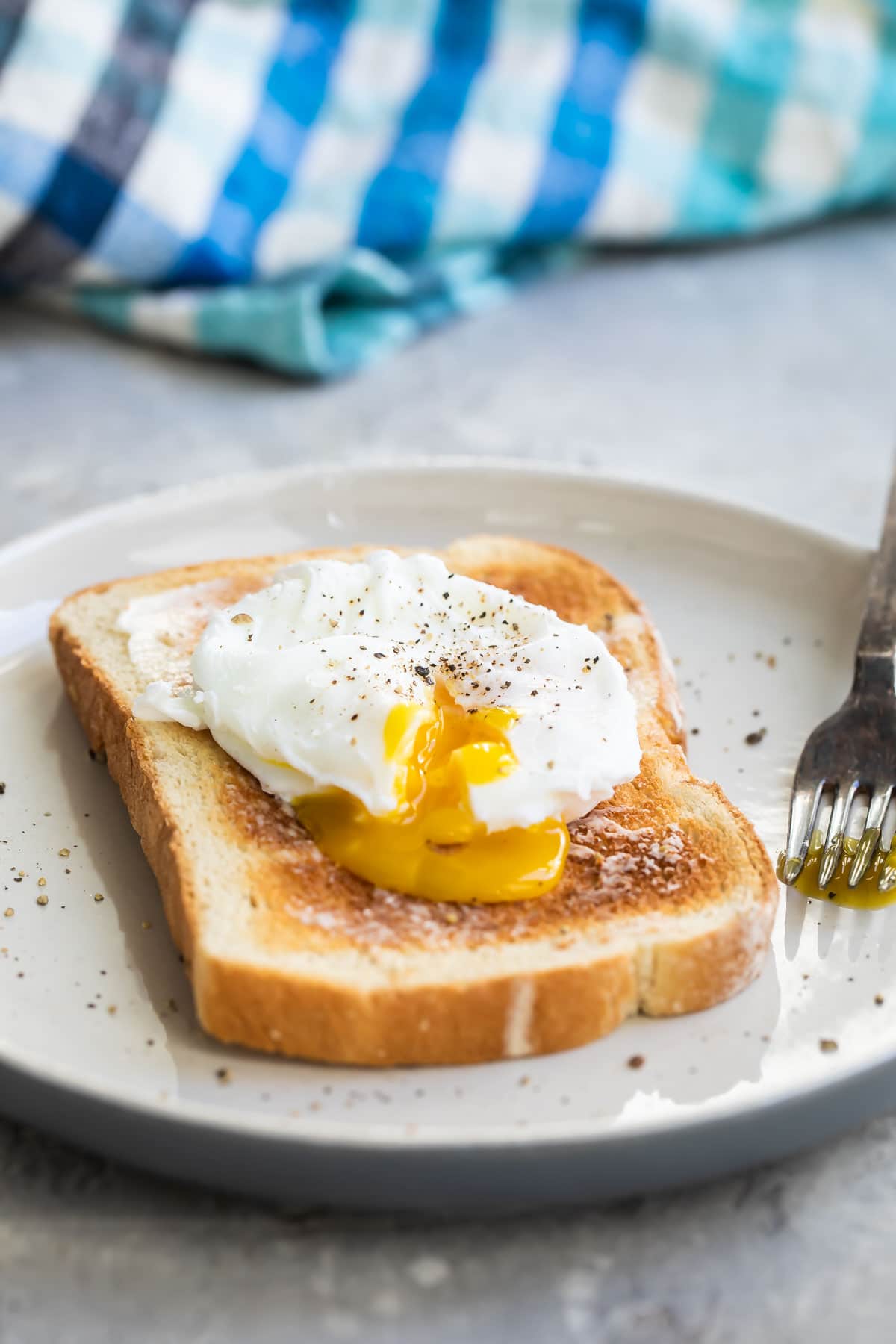
Table of Contents
Ingredient notes
- Eggs: The fresher the eggs are, the better they hold together during poaching.
- Vinegar: The acid helps hold the poached egg white together. Lemon juice can be substituted for vinegar, but may change the taste of the eggs slightly. If you have it, opt for white distilled vinegar for poaching eggs.
Step-by-step instructions
- Before you start, crack the eggs you plan to poach into a mesh strainer to get rid of the thinner part egg white. (Discard it, freeze it, or whisk it into an omelet or other egg recipe, if you like.) Place eggs in individual ramekins or small bowls while you heat the water.
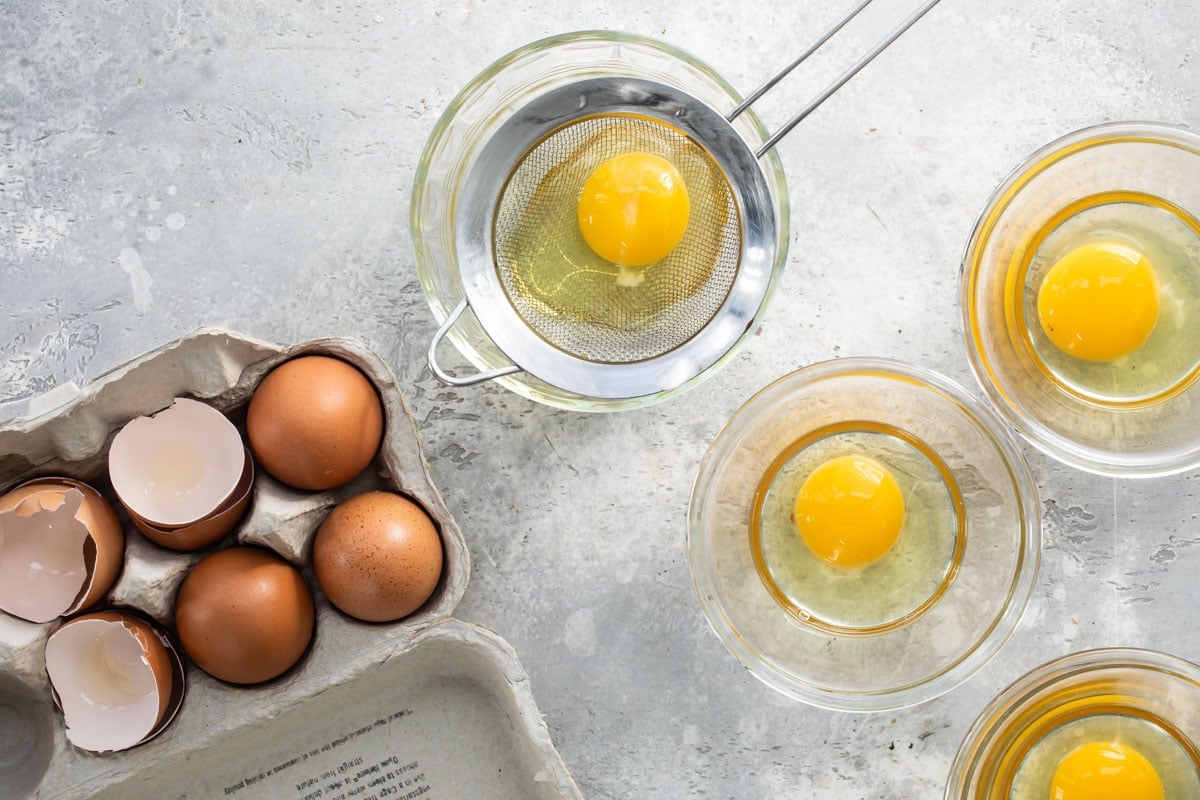
- Heat at least 6 cups of water in a pot on the stove. When boiling, add the vinegar, and reduce the heat to a gentle simmer. One at a time, pour the eggs into the simmering water, being careful to keep them separate. If you’re cooking one egg, gently swirl the hot water around the egg as it cooks. If you’re cooking multiple eggs, leave the water be.
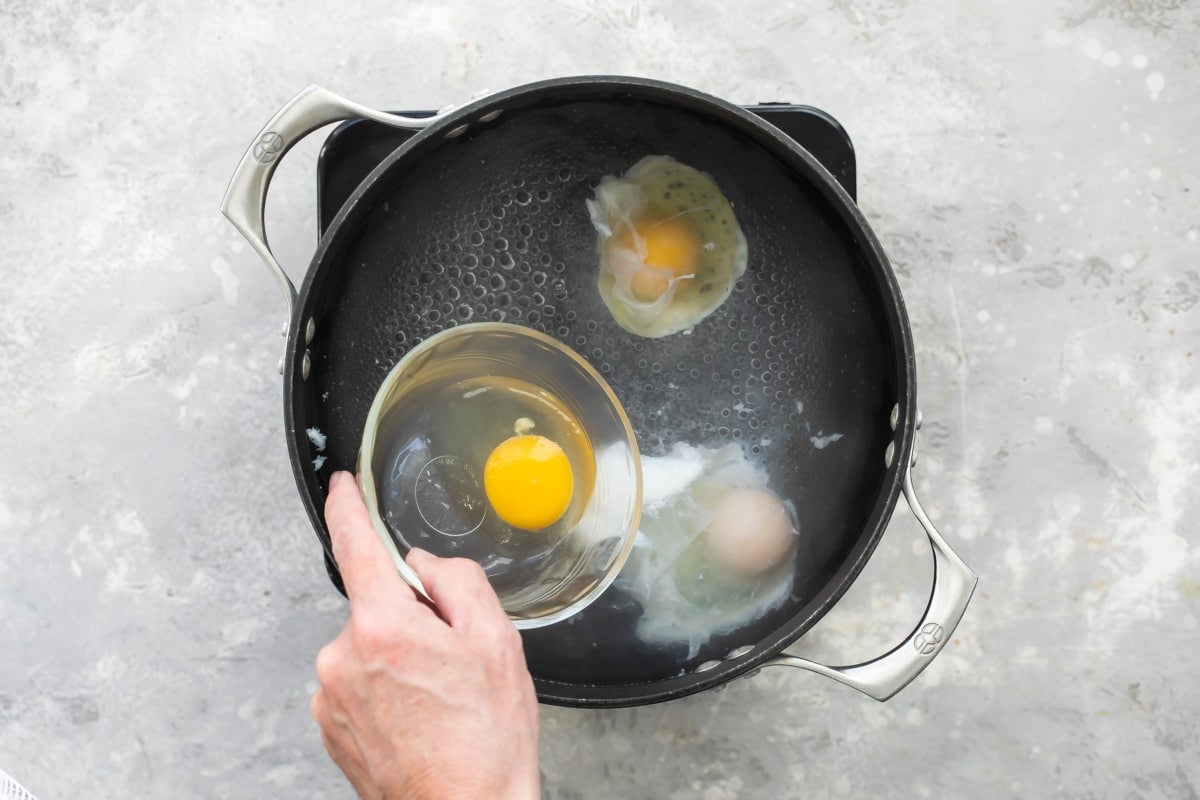
- Poach the eggs until the whites are set and the yolks are still soft. Depending on the size of the egg and how soft you prefer the yolk, this could be 2 minutes or longer, up to 3 to 4 minutes. Lift the poached egg out of the water with a slotted spoon and pat dry with a paper towel before serving.
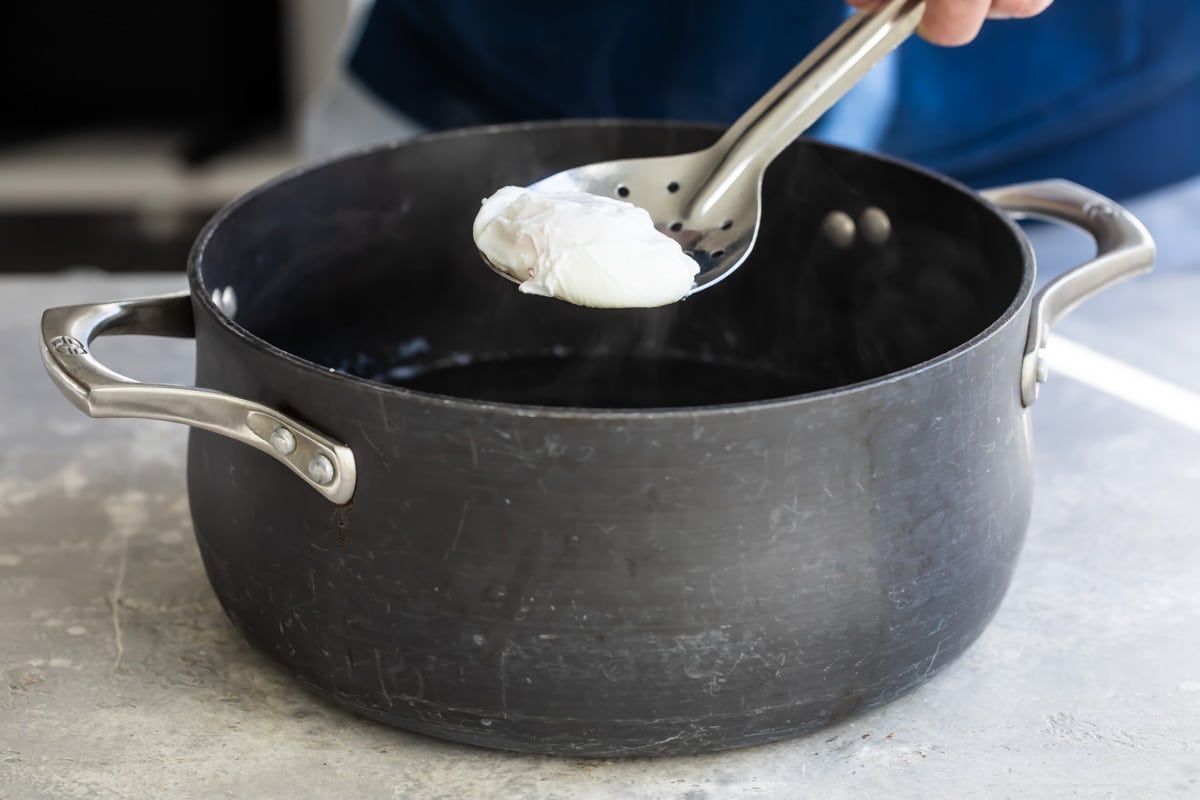
Recipe tips and variations
- Yield: This method for how to poach eggs creates 4 eggs. Scale up or down as needed, cooking no more than 4 eggs at once in the same pot.
- Make ahead: Undercook the eggs by about 1 minute, then place the poached eggs in an ice water bath to cool. Store eggs in cold water in the refrigerator for up to 2 days. Heat them up in a little hot water, for 20 to 30 seconds or until warm.
- Holding: If you’re making multiple eggs to feed a group all at once (for something like my Pulled Pork Eggs Benedict), keep them in a covered pot of 150-degree water.
- Separate ramekins: It seems like a lot of unnecessary prep and clean up, but cracking the eggs in their own little cup before poaching the eggs makes the process smoother.
- Deep water: Don’t skimp on hot water; make sure the eggs have enough room to cook. Fill a large pot at least halfway full of water before bringing it to a boil.
More breakfast recipes
Breakfast Recipes
Croissant French Toast
Breakfast Recipes
Pulled Pork Eggs Benedict
Stock, Sauce, and Spread Recipes
How to Make Hollandaise Sauce
Join Us

How to Poach Eggs
Ingredients
- 4 eggs (see note 1)
- 1 tablespoon distilled white vinegar
- Salt and freshly ground black pepper
Instructions
- Into a mesh strainer, crack each egg one at a time to strain some of the excess egg white, about 20 to 30 seconds. Pour each egg into individual small bowls.
- Fill a Dutch oven or large pot halfway with water, about 6 cups, and bring to a boil. Add the vinegar. Reduce heat to a gentle simmer so the water is steaming and small bubbles barely break the surface.
- Gently drop one egg into the water at a time, leaving space between them. Cover pot, remove from heat, and let stand until whites closest to the yolk are just set and opaque, about 3 minutes (or 4 minutes for medium-cooked yolks or 6 minutes for hard-cooked yolks).
- If the whites are not set after 3 minutes, continue checking every 30 seconds. Using a slotted spoon, carefully lift each egg out and drain over the water. Pat dry with paper towels if desired season to taste with salt and pepper, and serve.
Notes
- Eggs: The fresher the eggs are, the better they hold together during poaching.
- Vinegar: The acid helps hold the poached egg white together. Lemon juice can be substituted for vinegar, but may change the taste of the eggs slightly. If you have it, opt for white distilled vinegar for poaching eggs.
- Yield: This method for how to poach eggs creates 4 eggs. Scale up or down as needed, cooking no more than 4 eggs at once in the same pot.
- Make ahead: Undercook the eggs by about 1 minute, then place the poached eggs in an ice water bath to cool. Store eggs in cold water in the refrigerator for up to 2 days. Heat them up in a little hot water, for 20 to 30 seconds or until warm.
- Holding: If you’re making multiple eggs to feed a group all at once (for something like my Pulled Pork Eggs Benedict), keep them in a covered pot of 150-degree water.
- Separate ramekins: It seems like a lot of unnecessary prep and clean up, but cracking the eggs in their own little cup before poaching the eggs makes the process smoother.
- Deep water: Don’t skimp on hot water; make sure the eggs have enough room to cook. Fill a large pot at least halfway full of water before bringing it to a boil.
Nutrition
Meggan Hill is a classically-trained chef and professional writer. Her meticulously-tested recipes and detailed tutorials bring confidence and success to home cooks everywhere. Meggan has been featured on NPR, HuffPost, FoxNews, LA Times, and more.


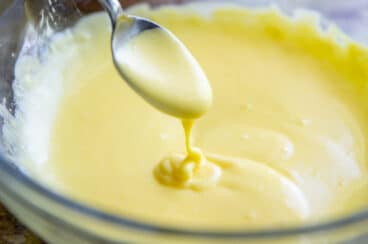
Thank you very much for the post, I actually learned a lot from it. Incredibly quality content on this site. Always looking forward to new recipes.